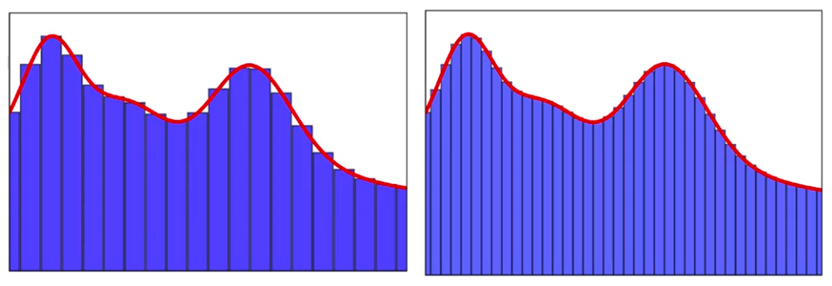Universal Approximation theorem
What makes Neural Networks tick mathematically.
This is going to be a really short article but I decided it was important to talk about it. So the reason why NNs work is due to a theorem called the Universal Approximation theorem.
What is it
What this means that given an x and a y, the NN can identify a mapping between them. "Approximately". This is required when we have non linearly separable data. (Aka you can't split them directly into n parts just by say drawing a line between them. This could be complex structures like images or text or anything which cannot be directly modelled.
So we take a non linear function, for example the sigmoid. $$\frac{1}{1 + e^{ - \left( w^{T}x + b \right)}}$$. Then we have to combine multiple such neurons in a way such that we can accurately model our problem. The end result is a complex function and the existing weights are distributed across many layers. Sounds familiar? Welcome to Deep Learning (lol).
The Universal approximation theorem states that
a feed forward network with a single hidden layer containing a finite number of neurons can approximate continuous functions on compact subsets of $$\mathbb{R}$$ , under mild assumptions on the activation function.
Um. Can these guys speak normally. -.- Lets break it down a bit.
- a feed forward network : take an input, apply a function, get an output, repeat
- a single hidden layer : yes you can use more, but theoretically...
- finite number of neurons: you can do it without needing an infinite computer
- approximate continuous functions: continuous functions are anything which dont have breaks/holes in between. This just says that it is possible to approximate the mapping which we talked about
- $$\mathbb{R}$$ is just the set of all real numbers
- An activation function is something like the ReLU/Sigmoid
- All this boils down to the fact that a neural network can approximate any complex relation given an input and an output.
How does it work?
Well here is an image. See if you can understand whats happening.

Makes sense right? Every curve at an infinitely small point can be a collection of lines (approximately). Oh and as a form of citation, here is where I got this image from. Its a great blog you should really check it out.